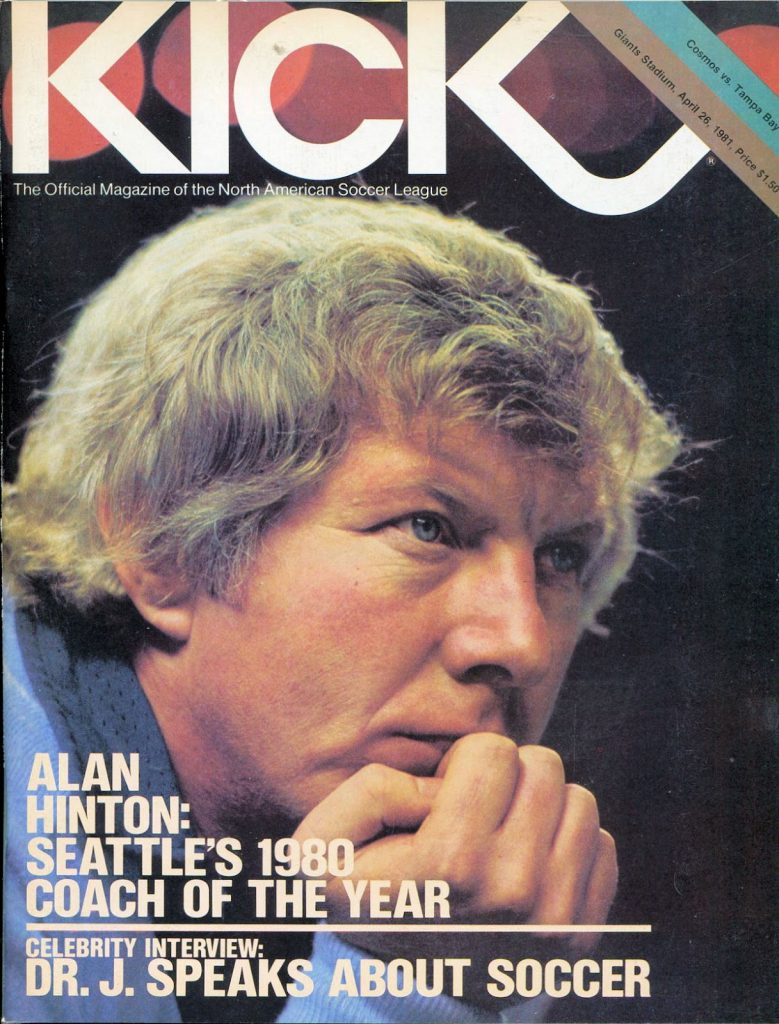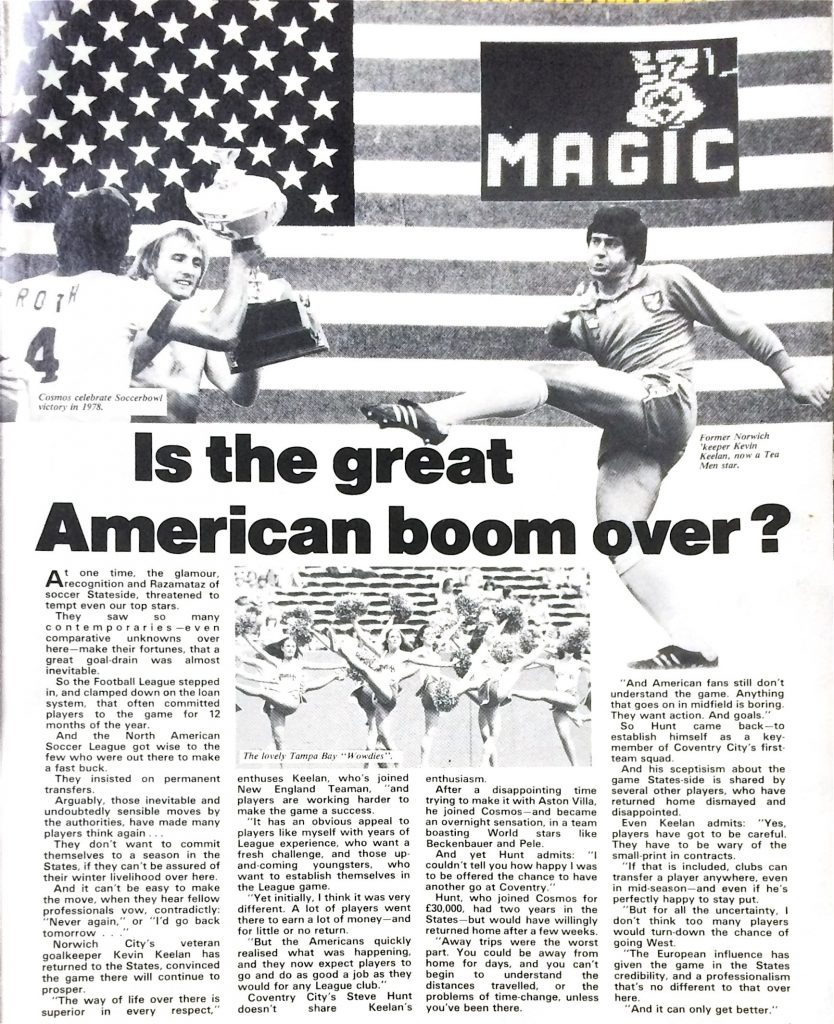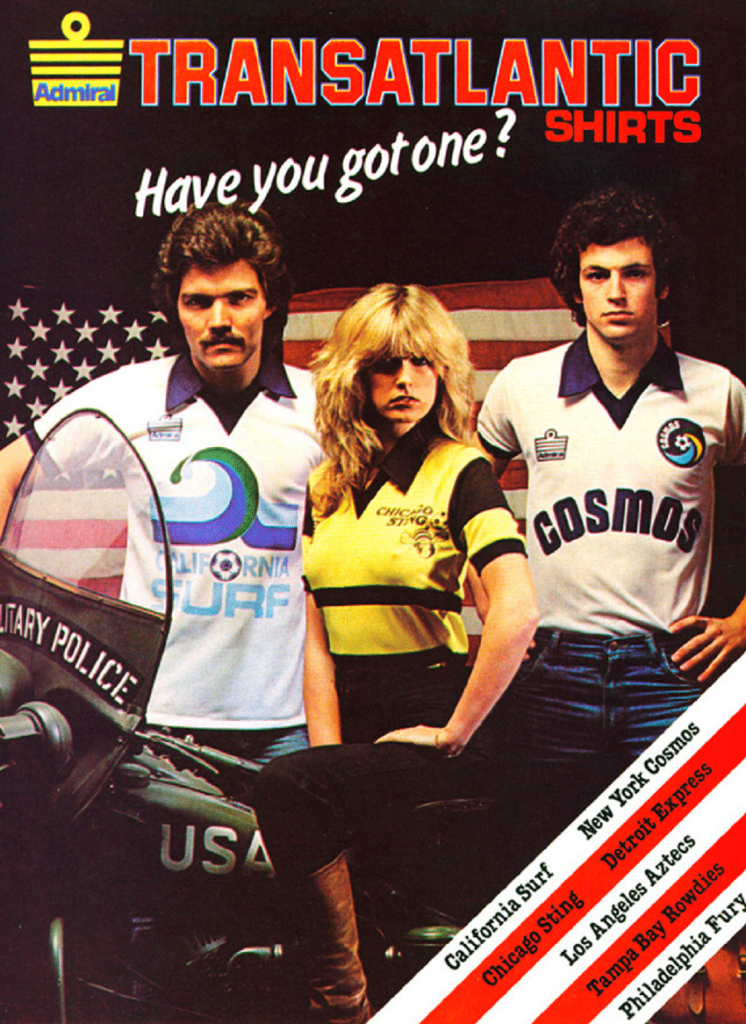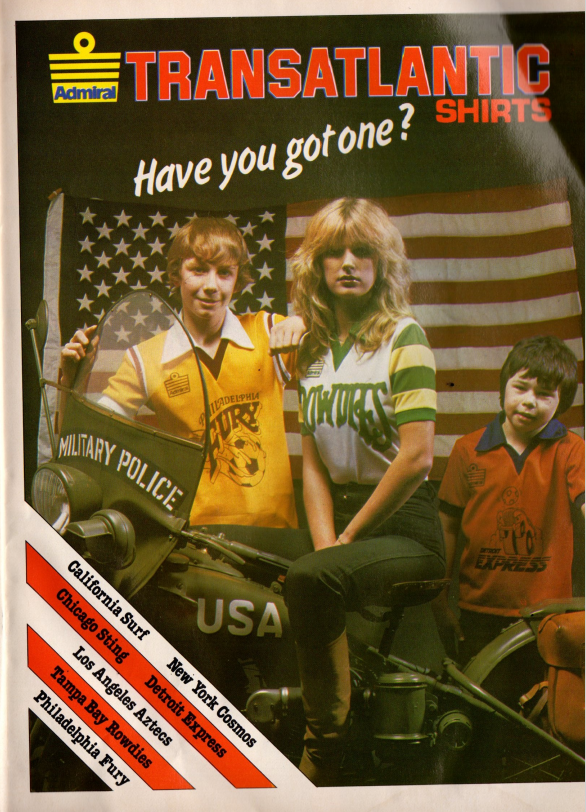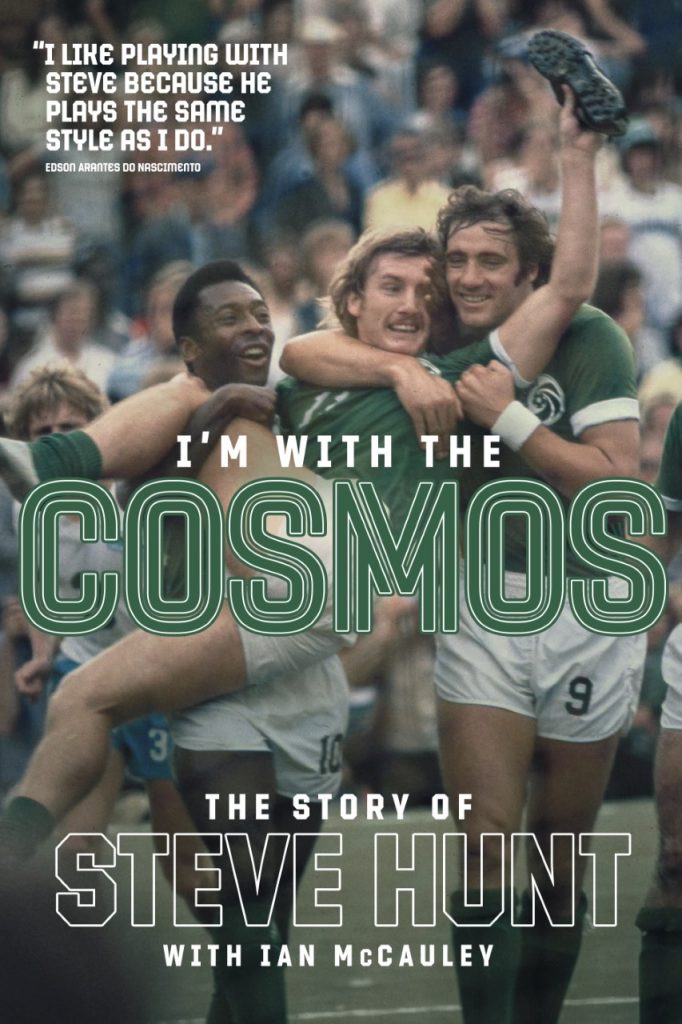NASL: The British Abroad (Football in North America, Part Three)
After the rise and fall of the American Soccer League in the 1920s – a competition featuring a strong British influence – the next attempt at a professional league in North America started with wholly imported teams. The United Soccer Association was launched in 1967, with Stoke, Sunderland, Wolves (plus Aberdeen, Dundee United, Hibs, Glentoran and Shamrock Rovers alongside European and South American sides) taking on American names. The season ended with the Los Angeles Wolves, represented by their English counterparts, beating the Washington Whips (Aberdeen) 6-5 to take the championship. Clearly this was an unsustainable model, and the United Soccer Association merged with the rival National Professional Soccer League in 1968 to form the North American Soccer League (NASL), which ran for an eventful 16 years.

George Best of San Jose Earthquakes, 1980-81 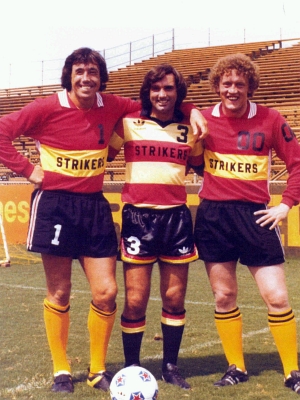
Gordon Banks, George Best, and Ian Turner of Fort Lauderdale Strikers, 1978 – courtesy www.nasljerseys.com
Throughout the NASL era, parallels with the boom league of the 1920s remained, with a steady supply of British imports; coaches and players, stars and journeymen. Initially, as the NASL established itself, most of the UK players were loaned from lower-division clubs. One of the league’s early successes was the Philadelphia Atoms, a new franchise coached by American Al Miller and, unusually, fielding several young US players plus seasoned British professionals including future Liverpool manager Roy Evans and the Southport trio Chris Dunleavy, Andy Provan and Jim Fryatt. This combination took the Atoms to the 1973 championship and was a major boost to the fledgling sport.
The blend of native and imported talent was one the NASL struggled to maintain throughout its existence, with most sides sticking to the league minimum of two US-born starters per team. The league had many British managers, who naturally looked to players they knew, and the bulk of the imports came from the Football League. Many lesser-known players thrived in a fresh environment, names like Paul Cannell, Steve Hunt and Carl Valentine; at this stage new arrivals came on both permanent transfers and, more commonly, summer loans. With the NASL soon able to pay the wages of superstars such as Pelé, Johan Cruyff, Eusébio, Franz Beckenbauer, George Best and Gerd Müller, North America was becoming a major destination in world football by the late 1970s.
The presence of such players in the NASL meant the league was often perceived unfairly in Europe, and Britain, as a lucrative ‘retirement home’ for ageing stars. Increasingly it attracted not only established professionals but some of the Football League’s bigger names. Several of England’s 1966 World Cup winners graced the NASL – Alan Ball, Gordon Banks, Geoff Hurst and Bobby Moore, together with internationals such as Joe Corrigan, Gerry Daly, Peter Osgood, Bruce Rioch and Dennis Tueart. The emphasis on entertainment in North American soccer meant players often regarded as a ‘luxury’ by the England national team – Alan Hudson, Rodney Marsh, Frank Worthington – were able to thrive. Unlikely British combinations were found across the league, for example at Fort Lauderdale, where Banks and Best played alongside ex-Oldham Athletic stalwart Maurice Whittle and Ian Turner, Southampton’s 1976 FA Cup-winning goalkeeper.
However a number of British players at the start of their careers also gained valuable experience in the NASL, including Graeme Souness, Brian Talbot, Mark Hateley, and Peter Beardsley. Among the most successful British players in the NASL were young strikers Ron Futcher and Alan Willey, both among the league’s all-time top scorers, who formed a prolific partnership at the Minnesota Kicks. Others recognised by selection for the ‘All Stars’ team included Peter Bonetti, Mike England, Gordon Hill, Brian Kidd, and Dave Watson. The ultimate individual accolade, the league’s Most Valuable Player (MVP) award was won by Peter Silvester, Mike Flanagan, and Roger Davies. Peter Ward, a big-money signing by Brian Clough for Nottingham Forest in 1980, later flourished in the NASL, voted MVP in 1982 with Seattle Sounders.
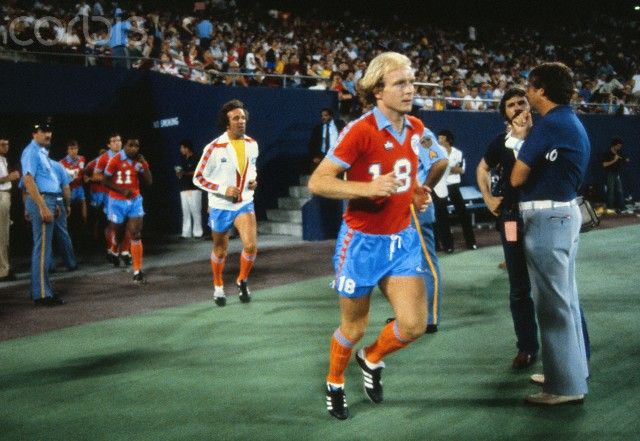
Ron Futcher of Minnesota Kicks, 1979 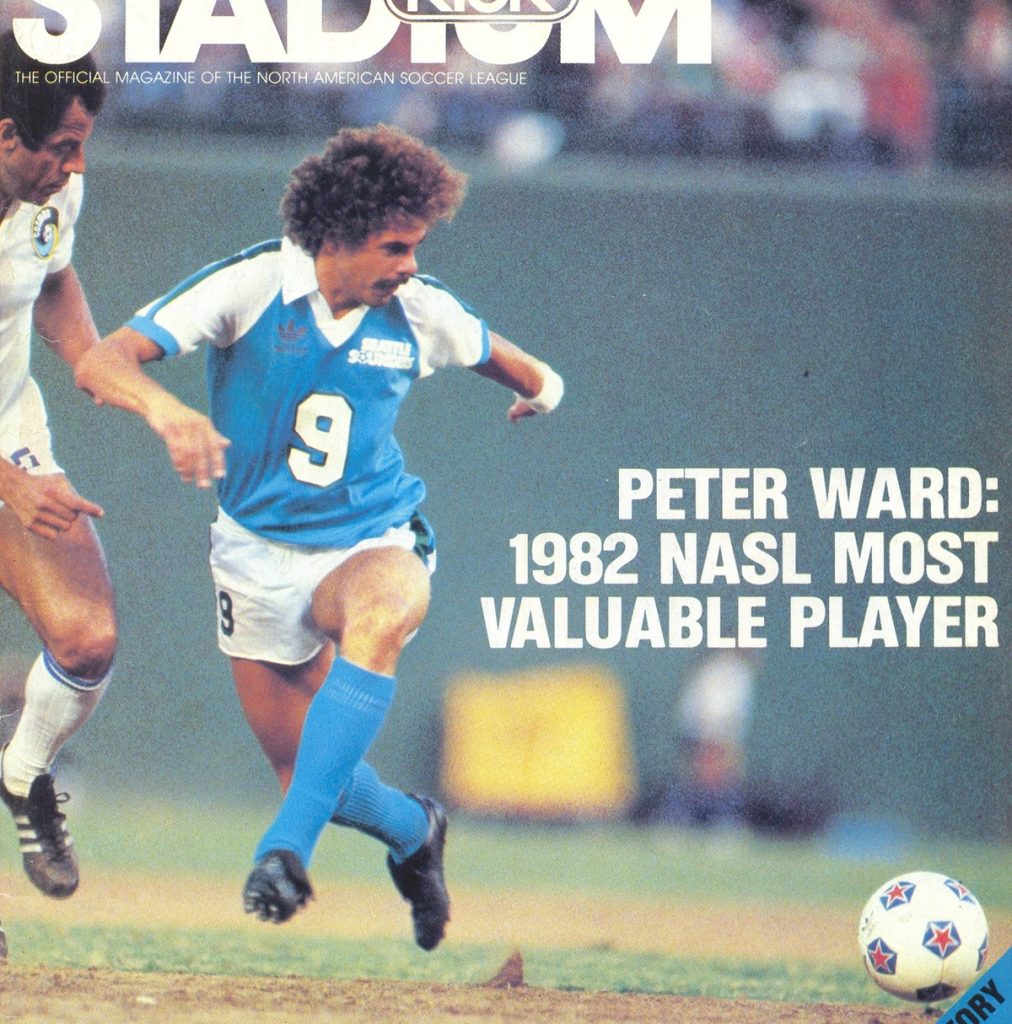
The number of familiar faces operating in the US undoubtedly contributed to the healthy coverage the NASL gained in English football magazines, notably Shoot!, which otherwise offered minimal space to even the major European leagues. Several managers too made a significant impact across the Atlantic – Gordon Bradley and Ken Furphy both took charge of the New York Cosmos, while Ron Newman (three times Coach of the Year), Tony Waiters and Gordon Jago all established themselves in the NASL. Former Football League winners Johnny Giles, Terry Hennessey and Alan Hinton also enjoyed coaching success in the States.
The loss, even temporarily, of players at their peak such as Britain’s first million-pound footballer Trevor Francis (to Detroit), led to much debate in the UK. Brian James, writing in the Rothmans Football Yearbook 1978-79, argued that “it is Britain that suffers most through the success of the game in the United States.” James echoed widespread concerns that action was needed, urging that “the trans-Atlantic player traffic – and particularly the ‘loans’ are brought under rigorous control.” FA Chairman Ted Croker commented in 1979 that “soon the top players will have to decide if they want to play in England or America.”
Tranmere Rovers manager Johnny King bemoaned the lack of experienced players dropping down the English divisions: “That type of player is a rarity in the English game now. They all go to America. And can you blame them? The rewards are far greater.” Bobby Gould, assistant manager at Chelsea, shared King’s misgivings: “I blame the American scene for the lack of quality at the moment in the Second Division. The departure of so many top players to the States, players who would normally have left the First Division for Division Two, has caused a void.”
Eventually, it took legislation from the Football League, alongside FIFA, to curb the stream of exports by banning the popular summer loans in 1979. The UK magazine Soccer Monthly, reflecting on the likely impact in an article entitled ‘USA facing player crisis’ in November 1979, quoted Tampa Bay’s American goalkeeper Winston DuBose as saying: “The standard will drop alarmingly. Like it or not, we can’t deny British players are necessary. It’s a fact. I fear for the NASL.”
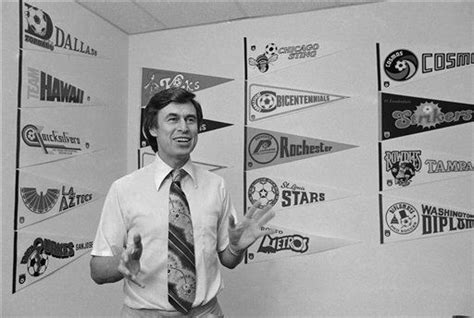
Possibly the most influential single British contribution to the NASL came from Phil Woosnam – a former Welsh international who had lengthy Football League spells with Leyton Orient, West Ham and Aston Villa before moving to the US. As the league’s commissioner from 1969 to 1982, Woosnam was a tireless advocate for the sport in North America, insisting in 1977 that “This country will be the center of world soccer. In the 80s there will be a mania for the game here. The NASL will be the world’s number one soccer league. And it will be the biggest sports league in the USA.”
Woosnam oversaw the league’s mid-70s boom, when high-profile franchise owners included Elton John (part-owner of the Los Angeles Aztecs) and his fellow rock stars Peter Frampton, Rick Wakeman and Paul Simon (part of the group owning the Philadelphia Fury). A major innovator in English football, Jimmy Hill had a controversial spell in charge of the Detroit franchise. Clive Toye, an English journalist who became General Manager of the New York Cosmos, was a key figure in the NASL’s founding and subsequent marketing campaign, influential in the signing of Pelé in 1975. It was his and Woosnam’s vision which helped to shape the NASL’s rise from obscurity, though they were unable to prevent its demise in 1984.
David Tossell’s Playing for Uncle Sam: The Brits’ Story of the North American Soccer League is a comprehensive study, a full book on this topic. Ian Plenderleith’s Rock ‘n’ Roll Soccer: The Short Life and Fast Times of the North American Soccer League is essential reading on the overall history of the NASL, and was a great help in the writing of this article. An important perspective is also provided in Black Pioneers of the North American Soccer League (1968-84) by Patrick Horne; the author discussed the book on the Soccer Nostalgia Talk podcast in April 2021. A fourth NASL-related book is by one of the many Brits to play in the NASL, Steve Hunt, as he recounts his career in I’m With the Cosmos.
I found further useful information and images at http://www.nasljerseys.com and Ian Morris’s https://mytampabayrowdies.blogspot.com/.
The NASL’s impact on the Football League is among the topics covered in my book Before the Premier League: A History of the Football League’s Last Decades; Ron Futcher is one of the interviewees.

